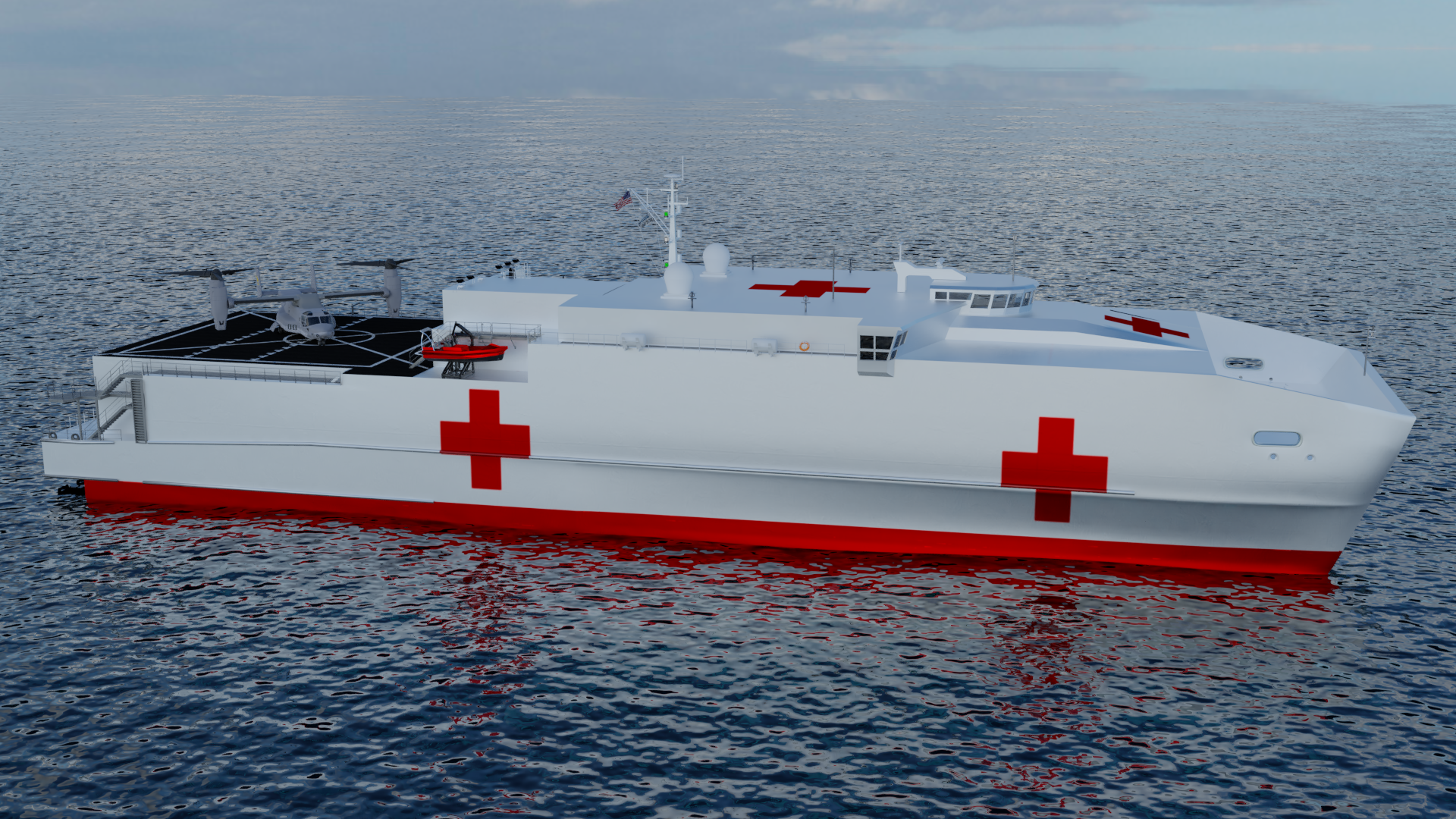
After the Navy last week issued a $235-million contract modification to Austal USA to build its latest multi-purpose Expeditionary Fast Transport ship, new details of the ambulance variant have come to light.
A spokesman for Naval Sea Systems Command told USNI News this week that the ambulance variant of the Expeditionary Fast Transport (EPF) will have both an intensive care unit and other healthcare accommodations.
“Beginning with EPF 14, the EPF Flight II configuration enhances current EPF capabilities by including health services (a combined forward resuscitative care capability with a limited Intensive Care Unit (ICU) and medical ward) to the ship while maintaining most of the original mission requirements of the ship,” Alan Baribeau said in the statement.
The Pentagon issued the contract modification for EPF-15 to the Alabama shipyard in a Feb. 26 contract announcement. EPF-15 is the second ambulance variant, now called Flight II, of the Spearhead-class Expeditionary Fast Transport vessel that Austal is building for the Navy.
“Work performed is for the detail design and construction of EPF 15,” last week’s Pentagon contract announcement reads. “The EPF class provides high speed, shallow draft transportation capability to support the intra-theater maneuver of personnel, supplies and equipment for the Navy, Marine Corps, and Army.”
Austal in a Feb. 28 press release said EPF-15 would have an “enhanced medical capability” and noted the EPF platform can conduct a wide variety of tasks ranging from anti-drug operations to providing humanitarian aid.
“At its core, the EPF is designed to be highly capable, flexible and affordable,” Rusty Murdaugh, Austal USA’s interim president, said in a statement.
“With this baseline, we’ve been able to deliver multiple ships that are performing different missions for the U.S. military,” he added. “The award of EPF 15 allows the Navy to leverage a hot production line and highly trained workforce to continue producing ships that are meeting the needs of warfighters today and into the future.”
Austal has been building the EPF ship class, which the Navy has most recently experimented with as an afloat hub for Littoral Combat Ship maintenance, since 2010.
Baribeau noted that, for EPF-14 and EPF-15, the medical capability is not the main mission.
“The medical mission is not the primary mission. The Flight II health services capability improvements support Role 2 enhanced medical care (E MTF) as defined by the Joint Publication 4-02 for Joint Health Services. Flight II EPFs will be able to stabilize postsurgical cases for evacuation without the requirement to first route them through a higher facility,” Baribeau said, referring to the ability for patients to recover onboard the ship after surgery.
The Navy’s current hospital ships – USNS Mercy (T-AH-19) and USNS Comfort (T-AH-20) – received considerable attention last year when they went to Los Angeles, Calif., and New York City, respectively, to help relieve local hospitals battling COVID-19.
USNI News reported at the time that neither Mercy nor Comfort have ever used their respective 1,000-bed maximum capacities.





